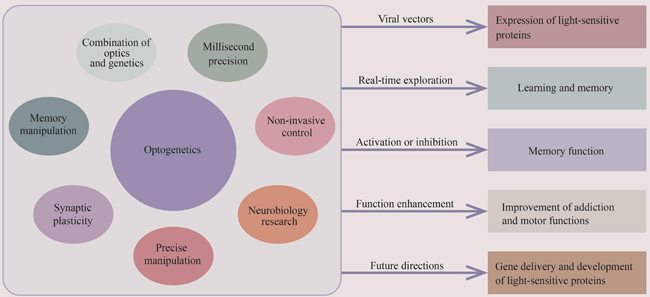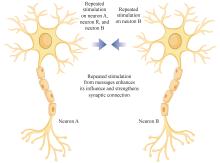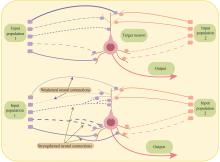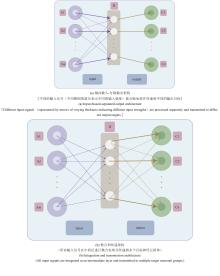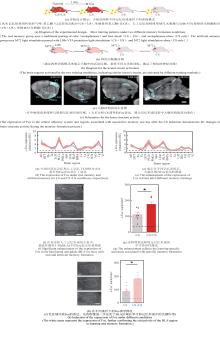|
||
|
Research on the application of optogenetic tools in learning and memory
Synthetic Biology Journal
2025, 6 (1):
87-104.
DOI: 10.12211/2096-8280.2024-042
Optogenetics represents an advanced technology that facilitates precise control of gene expression and neuronal activity in living cells through light. Introduced by neuroscientist K. Deisseroth in 2005, this methodology has transformed neuroscience research, empowering researchers to modulate excitable tissues and neural circuits with exceptional spatiotemporal accuracy. Optogenetics necessitates the expression of light-sensitive proteins, including channelrhodopsins, halorhodopsins, and various microbial opsins, within specific cells. Employing viral vectors and tissue-specific promoters, these proteins ensure targeted expression. Exposure to designated wavelengths of light permits these proteins to activate or inhibit cellular activity, thereby modulating neuronal behavior. The implementation of optogenetics has significantly enhanced comprehension of learning, memory, and neural plasticity. This technology enables the examination of the molecular dynamics associated with synaptic plasticity, long-term potentiation (LTP), and long-term depression (LTD), which are pivotal for memory. Real-time manipulating of specific neuronal populations can elucidate the intricate neural circuits involved in these phenomena. Additionally, optogenetics has facilitated the exploration of potential therapeutic approaches for neurological conditions such as Alzheimer’s disease by meticulously controlling memory-associated circuits. The utility of optogenetics transcends fundamental research, yielding promising prospects in addiction to studies and motor function enhancement. By modulating distinct neural circuits, it is possible to alter addiction-related behaviors and augment motor functions. Furthermore, the amalgamation of optogenetics with cutting-edge technologies like artificial intelligence and deep learning is anticipated to refine stimulation protocols, resulting in more precise and efficacious experimental outcomes. Notwithstanding its transformative capacity, the clinical application of optogenetics encounters significant obstacles, including the requisites for safe and effective gene delivery systems and the formulation of light-sensitive proteins with optimal characteristics for applications in human beings. Future investigations should concentrate on surmounting these hurdles while expanding the applications of optogenetics in neuroscience and related fields. The integration of optogenetics with multidisciplinary approaches is poised to unveil new realms in brain research, yielding profound insights into mechanisms governing memory, learning, and neural plasticity.

Fig. 4
Optogenetic tools and their working mechanisms
Extracts from the Article
在抑制性调节器方面,Archaeorhodopsin(Arch)是一种黄光敏感的外向氢离子泵,广泛应用于诱导细胞的超极化[12]。在黄光照射下,Arch泵出氢离子(H+),使细胞超极化并维持静息状态。光照停止后,Arch能够迅速恢复到关闭状态。其他抑制性调节器包括PAC-K、BLINK-1、GtACR1、Halo和Jaws等,通过不同的机制引导离子流动以抑制细胞活动[40-41](图4)。
Other Images/Table from this Article
|
